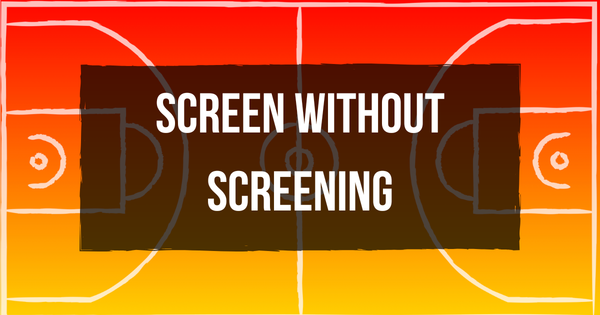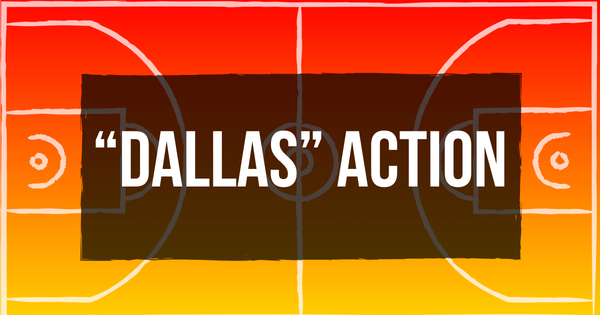Pick-and-Roll Flow
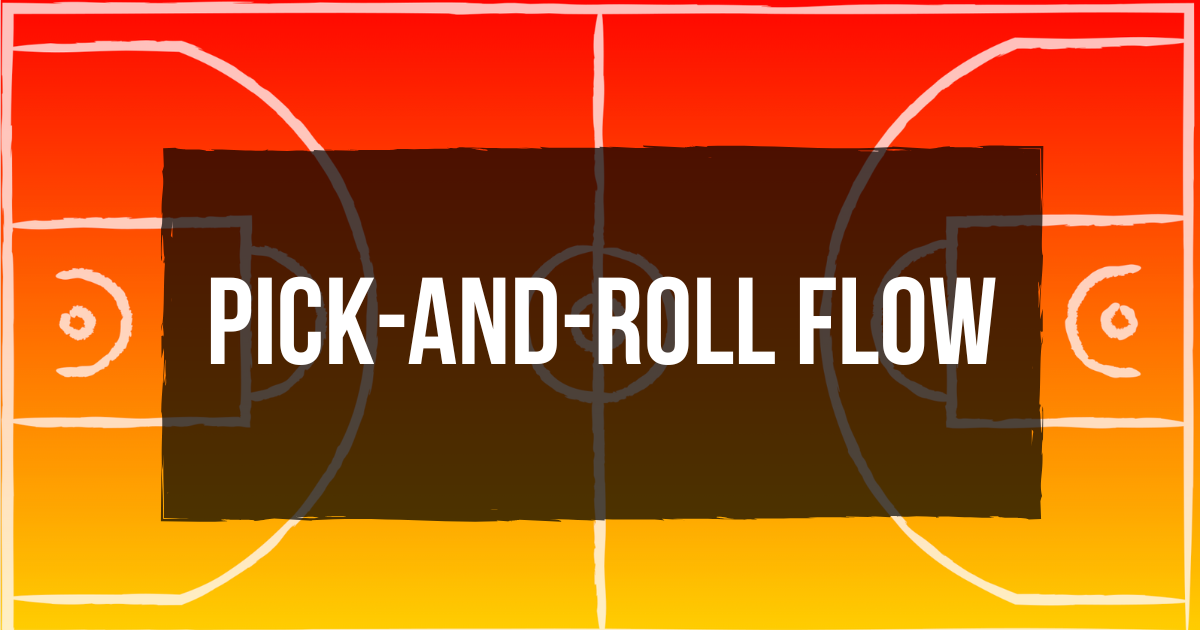
Possessions should not die after the first action. The sad fact is way too many of them do. If that action does not yield a shot, the rest of the possession flounders. It has no rhythm, flow and connectivity and play is reduced to 1-on-1.
In our Coach's Guide, we wrote about two tenets of Spanish basketball.
- Offensive Flow and Continuity - how every screen, cut and handoff flows naturally into the next
- Pick-and-Roll Sophistication - How all five players, even those out of the action, read and recognize opportunities generated from the ball screen
Through diagrams and video, let's breakdown what this looks like with the help of the Spain U18 National Team competing in EuroBasket 2025.
Spain U18 - Ball Screen Offense - Pick-and-Roll Flow
In the video above you see Spain blend three ball screen formations – Spread, Side and Alley – to create a ball screen offense that flows. Each one connects to another.
Spread Ball Screen
Like many teams, Spain often opens the possession with a drag ball screen early in the shot clock. The goal is creating an advantage as soon as possible in the possession.
Their drag screen is from the Spread formation. This is the first ball screen in the possession, but oftentimes not the last.
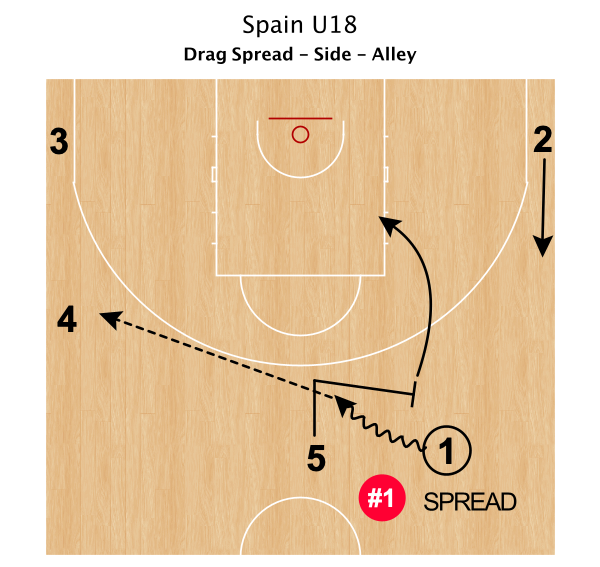
At times, it generates a driving opportunity for Player 1 or they hit Player 5 rolling to the basket. If Player 1 can penetrate, that may generate a drive-and-kick. The ball screen may even generate an advantage for Player 2 rising from the corner if his man tags Player 5 while rolling.
Players 3 and 4 are spaced along the sideline forming the "double side." Player 1 often makes the pass shown in the diagram above hitting the top man on the double side. This connects to the next ball screen formation.
Side Ball Screen
Again, what we want is an advantage as soon as possible in the possession. Assuming the first ball screen didn't generate that, let's flow to the next pick-and-roll.
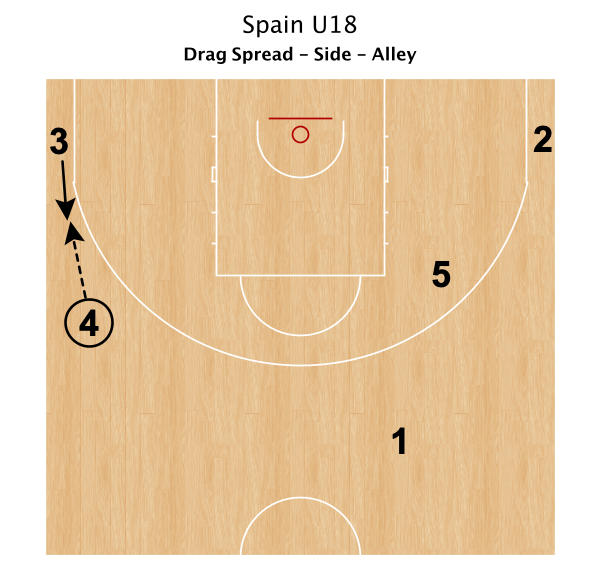
The show goes on without time for a reset. The offense moving on to the next ball screen – a side pick-and-roll.
Player 4 passes ahead to Player 3 (this could also be a dribble handoff).
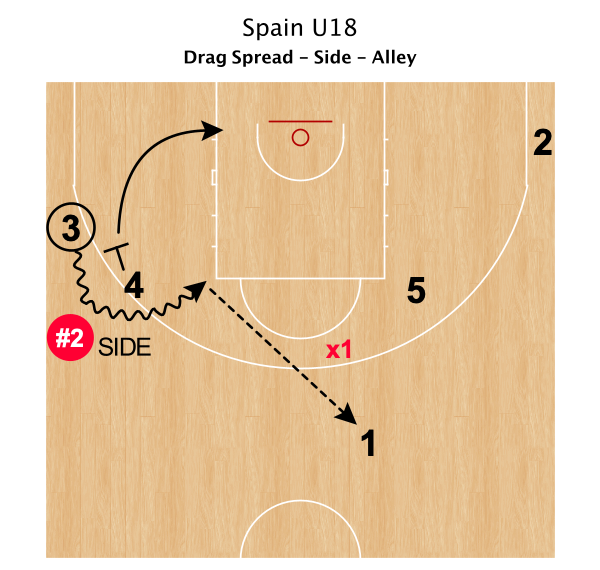
Player 3 may use or reject this screen and drive baseline. Often, rejecting it is a great choice! In the above diagram, they use the screen and Player 4 rolls to the basket.
For the roller, the hand target is to the lower corner of the backboard. If Player 4 is open, that is where we want Player 3 to pass the ball.
Note the setup of The Three Amigos – Player 1 is high in the court, not crowding the action. Player 5 is in the opposite midpost. Player 2 is in the corner. It is often x1 who clogs up the penetration from the ball screen. This architecture is important. Player 1 is available and this sets up the next pick-and-roll.
Alley Ball Screen
A third ball screen is available now. Player 5 steps into an Alley ball screen for Player 1. In an Alley, the screener's angle is toward the corner. Screen "the back pocket" of the on-ball defender inducing them over the ball screen.
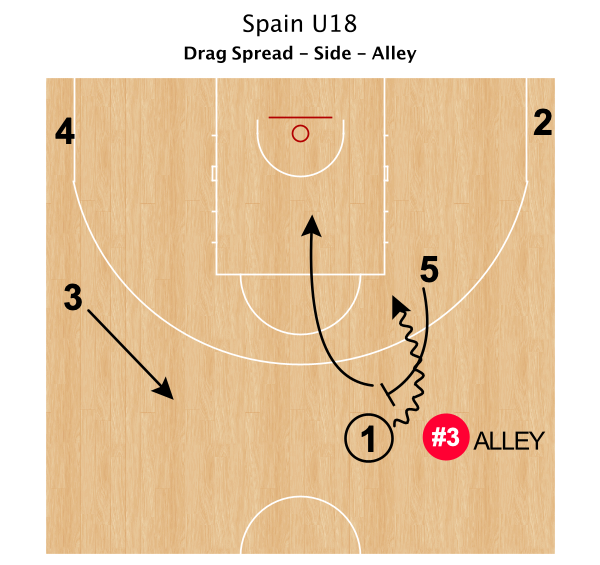
Player 1 has space to drive into. Player 5 rolls to the rim in this diagram. Note the movement of Player 3 replacing behind the ball screen. This is an example of the coordinated movement inherent in Spanish basketball. Player 3's defender is likely to tag the roller. Player 3's movement counters that. They are available for a throwback when this happens.
What makes Spanish basketball so effective isn’t just the quality of each individual action, but the way those actions are strung together with rhythm and purpose. A spread ball screen flows seamlessly into a side pick-and-roll, which in turn flows into an alley action—all without the possession losing tempo or connectivity. Instead of stalling after the first look, Spain’s offense keeps asking questions until the defense runs out of answers.
For coaches, the lesson is clear: build possessions on continuity, teach players to recognize opportunities beyond the first option, and emphasize collective intelligence over isolation. That’s the Spanish way, and it’s why their model continues to produce success at every level of international basketball.

